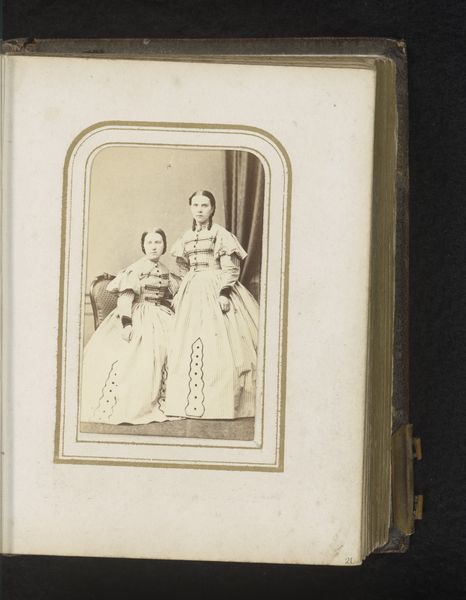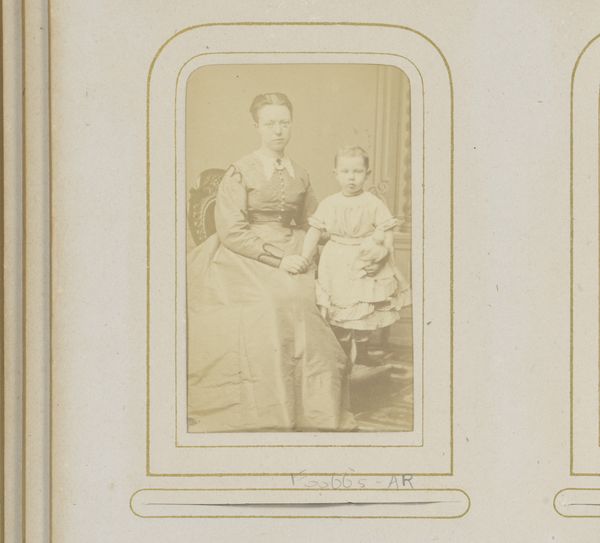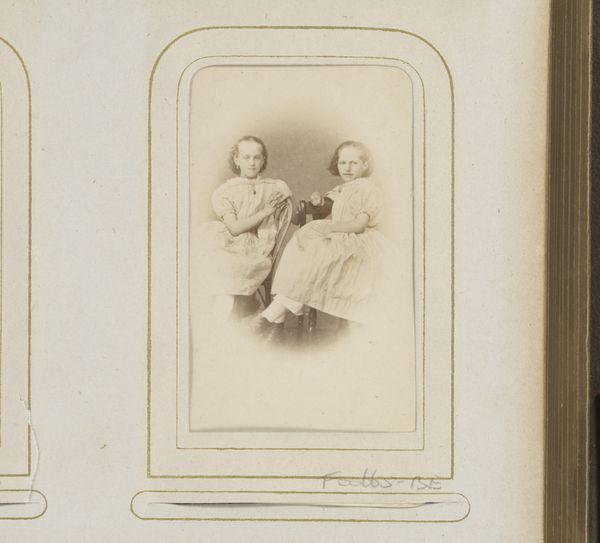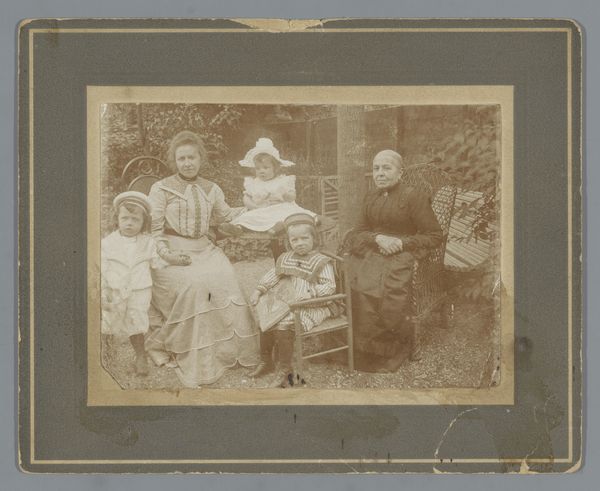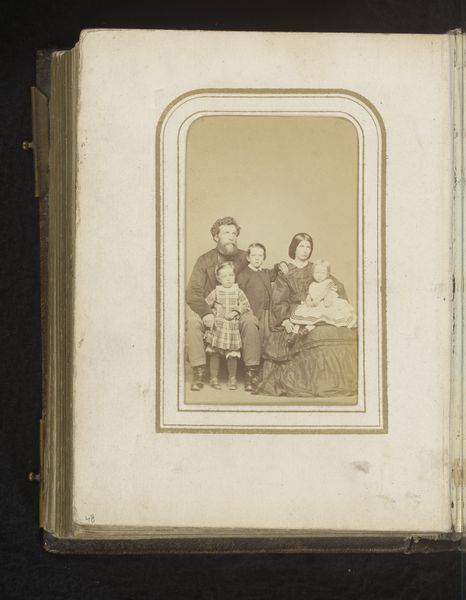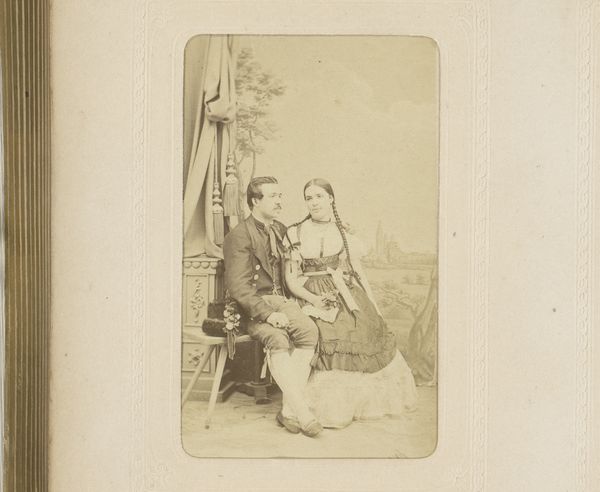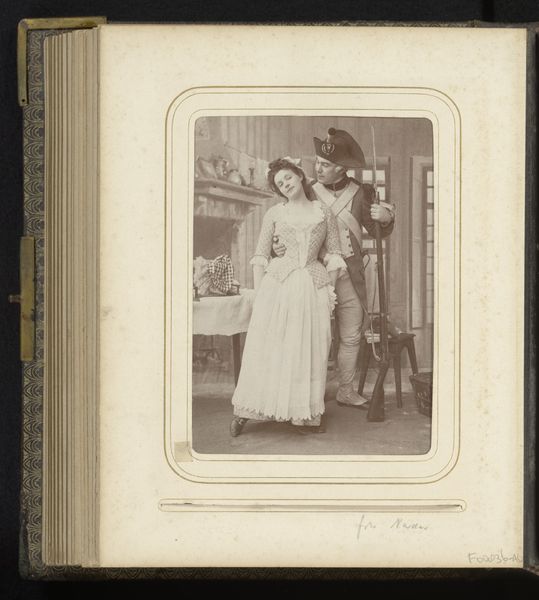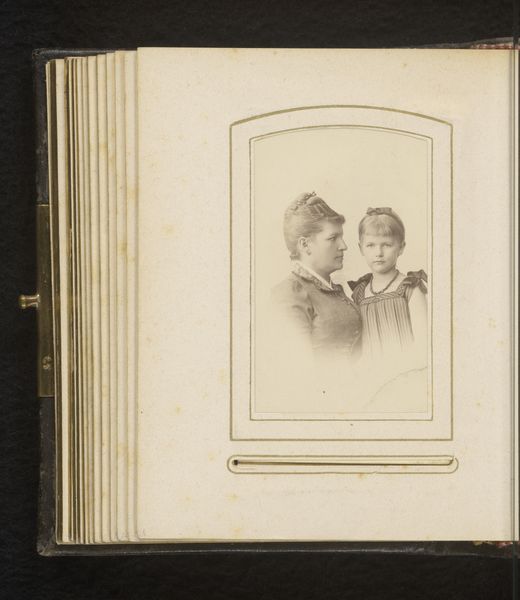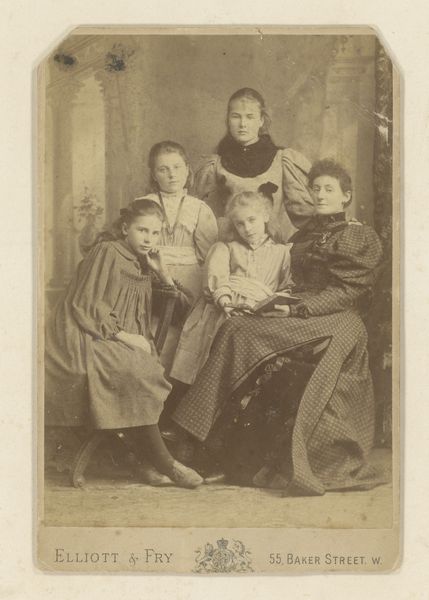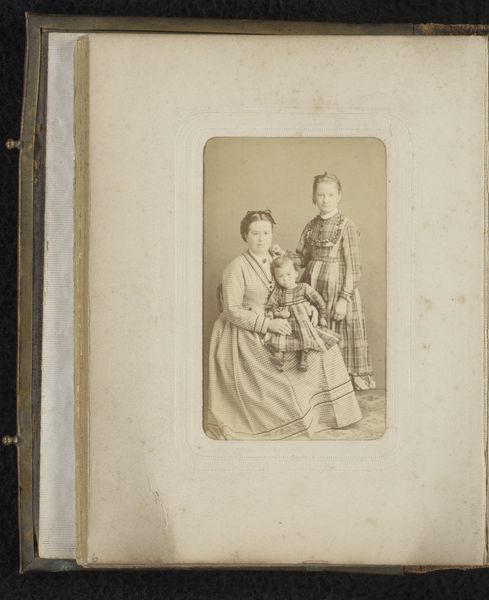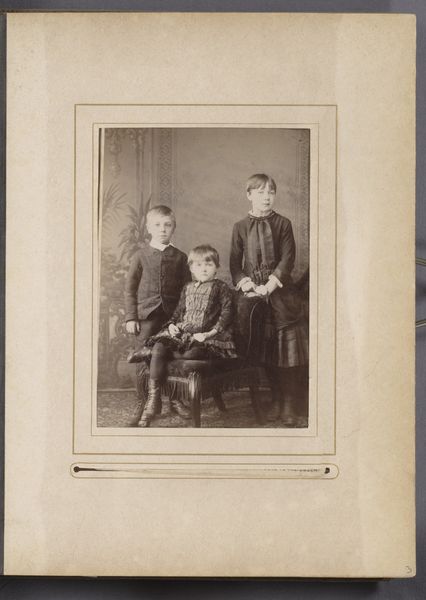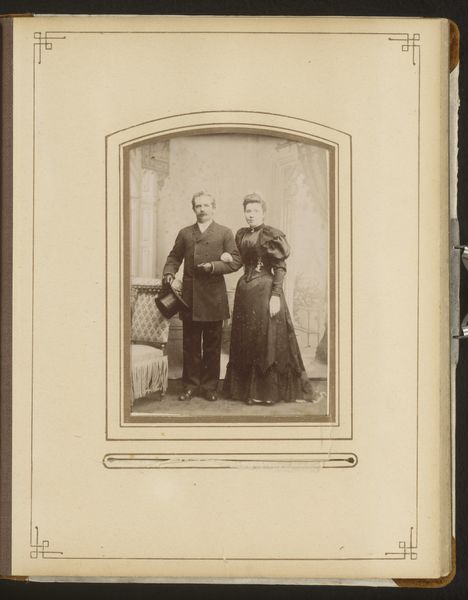
photography, gelatin-silver-print
#
dog
#
photography
#
group-portraits
#
gelatin-silver-print
#
19th century
#
genre-painting
Dimensions: height 137 mm, height 97 mm
Copyright: Rijks Museum: Open Domain
Curator: This gelatin-silver print, attributed to A. & G. Taylor, is entitled "Studioportret van drie vrouwen met schoothondje voor atelierdecor"—which translates to "Studio Portrait of Three Women with Lapdog in Front of Studio Decor". The piece is thought to have been produced sometime between 1880 and 1895. Editor: Gosh, talk about stepping back in time. It's all so buttoned-up, isn’t it? All the fussy clothes, the rather intense gazes... yet, something about the way they huddle together almost hints at vulnerability. I wonder what their story was. Curator: Contextually, the image encapsulates 19th-century portraiture norms: women presented within strict parameters of propriety and class. Note the studio decor attempting to evoke a sense of domestic respectability but failing, as all backdrops usually do. It's a constructed narrative of ideal womanhood. The presence of the lapdog functions symbolically, connoting wealth and status, and even, dare I say, an attempt to soften the rigid atmosphere with a touch of feminine tenderness. Editor: Tenderness indeed...that little pup looks almost as bewildered as they do! It's like they're all caught in amber, performing womanhood, as you put it, rather than just being. Do you think they felt constricted by these roles, by this... photographic straitjacket? Curator: Undoubtedly. Photography in this period became an essential tool in codifying societal expectations, particularly concerning women’s roles. These staged photographs became vehicles for reinforcing patriarchal values, demanding conformity in appearance and demeanor. Think of Judith Butler and her ideas around gender performativity; these women perform gender to their best abilities. Editor: Absolutely. You see echoes of those expectations still clinging to us today, don’t you? It kind of makes you want to shake these women loose, let them ditch the hats and corsets and run wild. The piece feels both historically distant, and yet… unnervingly close. It's quite captivating really. Curator: Indeed. When considered critically, beyond face value, it functions as a lens through which we can deconstruct ongoing societal narratives that bind people. It holds resonance to today, in the very constant social pressures imposed on women through social media for instance, to express themselves within the socially constructed boundaries of digital photography. Editor: I’ll look at it with totally different eyes now, I’m sure. Thanks for pulling back the curtain! Curator: My pleasure.
Comments
No comments
Be the first to comment and join the conversation on the ultimate creative platform.
